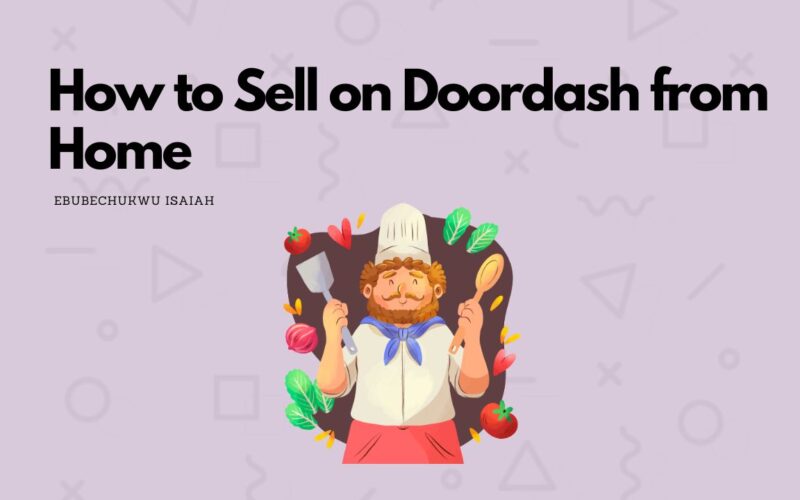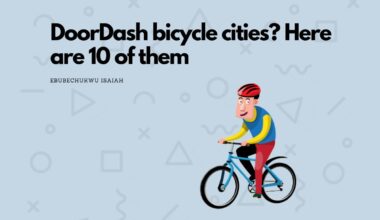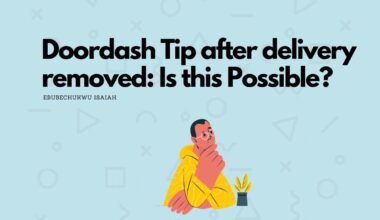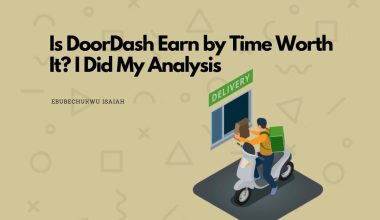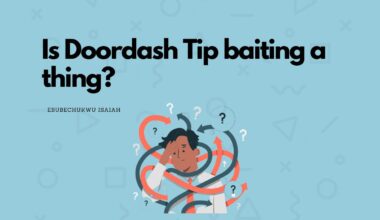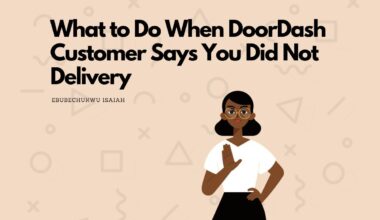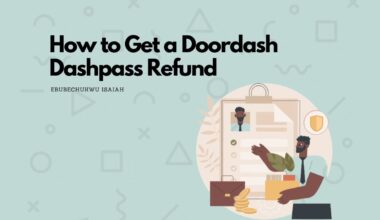Doing business from home shouldn’t be a problem, right? In fact, that’s the trend, with the “working from home” talks everywhere on the internet.
Not bad, but when the business becomes “food,” there’s just a lot to know.
In today’s article, we’ll be taking a quick look at how to sell on Doordash from home. Sit tight.
Can you sell food on Doordash from home?
The idea of selling from home can be really enticing. You start up a restaurant from home, with no upfront cost (your kitchen is already furnished), and do what you love to do while making easy cash, right?
Well, that’s not entirely the case.
Simply put, yes. It’s possible to sell food on Doordash from home, depending on the country or region, and local laws guiding where you reside.
The key point here is “the country’s legislation and laws regarding the sale of food there.”
For instance, in many Asian, African as well as some European countries, there are no sturdy laws guiding the sale of foods in public areas (regardless of where it’s made from) or any regulation that actively checks for quality.
However, this is not the case in the US, and generally most developed nations, where restaurants need an official license to operate comfortably.
Now, if you want to make food from home and sell them through Doordash, it’s important to note that you’d be treated as a first-party restaurant (or food vendor).
In other words, you may need a license as well as other legislative requirements to function properly.
Depending on your location, below are some of the requirements:
- Business Registration and License
- Food License or Food handler’s permit
- Health departmental permit, etc.
Obviously, you can’t get most of these requirements if you intend to cook from home.
“Cottage Food Laws” are legal regulations that allow individuals to operate small-scale food businesses from their homes. They are called “cottage” laws because they apply to people making food in their own kitchens, similar to the concept of a small “cottage” industry.
We’ll talk more about Cottage laws in the next section of this article.
However, one other thing to note is that Restaurants go through an approval process before getting on Doordash.
While Doordash does accept applicants at a good rate, there are people who also get declined. For a restaurant based at home, unless camouflaged, the likelihood of being accepted is low.
This is not to say that there are no home-based merchants on Doordash; there are, but a few.
Editors note: Something you don’t want to do is go straight to Doordash and sign up. This may be feasible but will come with some severe consequences if caught. To be straight, it’s illegal; hence, can risk getting yourself behind cells if anything goes wrong and you’re caught.
How to Sell on Doordash from Home
Now to the nitty-gritty of this article, how can you actualize your dream of selling on Doordash even while from your home?
Well, below are 4 steps we recommend:
Comply with the Cottage Law
As we’ve explained earlier, it’s quite difficult selling food from home. Doordash or not.
However, there’s a good side to the story.
With the Cottage law, as introduced earlier, you could.
The whole idea of the cottage law is to allow small businesses that make food in their home to sell to the public, without getting
However, this liberty comes with a condition.
Depending on the state, Cottage food operations (CFO) are restricted to selling certain types of food (basically, food that can’t necessarily cause hazards or foodborne diseases). They may also be limited to how much they can earn annually.
For instance, in California, the government divides Cottage law operation into 2 stages:
| Classes of CFO | Gross Annual Sales |
|---|---|
| Class A | $75,000 |
| Class B | $150,000 |
Also, Cottage food laws typically allow for the production and sale of foods that are considered low-risk or non-potentially hazardous.
These might include baked goods, jams, jellies, candies, dried fruits, and similar products.
Foods that require refrigeration, like dairy products or meat-based items, are usually not allowed under these laws. Hence, you’re not allowed to sell these foods.
Editors note: Not all states practice the Cottage law. So it’s important you do your check for the location you base.
Register Your Business
One of the requirements on Doordash is a business name, legally recognized.
Not just Doordash but you must have a valid business license or permit to operate a food establishment in most jurisdictions.
This ensures that your business is legal and abides by local regulations.
Furthermore, just like every responsible restaurant, you’d want to comply with the health and safety regulations outlined by the local health department in your local.
Apply to Doordash
Satisfying all the requirements, the next step to working from home as a merchant on Doordash would be to hit the apply button.
Review the fees selling on Doordash comes with and go with what suits you best.
We usually advise customers to go with the plus plan, as it works best. But if you’re in a tight budget you could consider the Basic plan.
After this is settled, go straight to the webpage here and fill out the form and the necessary information needed. It should look like this:
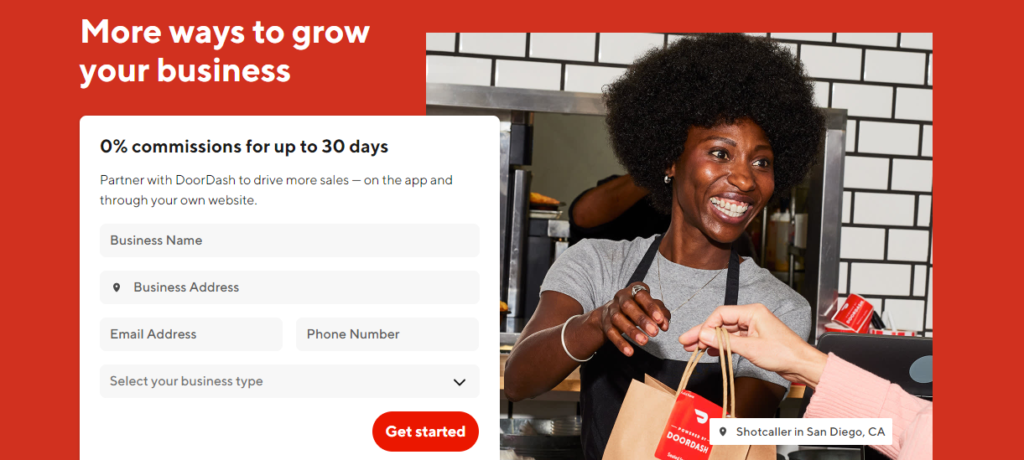
Final Thoughts
While it’s pretty much not the norm, you can certainly sell from home on Doordash, thanks to the cottage law – which also comes with a limitation you may want to consider.
As an Amazon Associate, I earn a small commission from qualifying purchases. Learn more about this.
